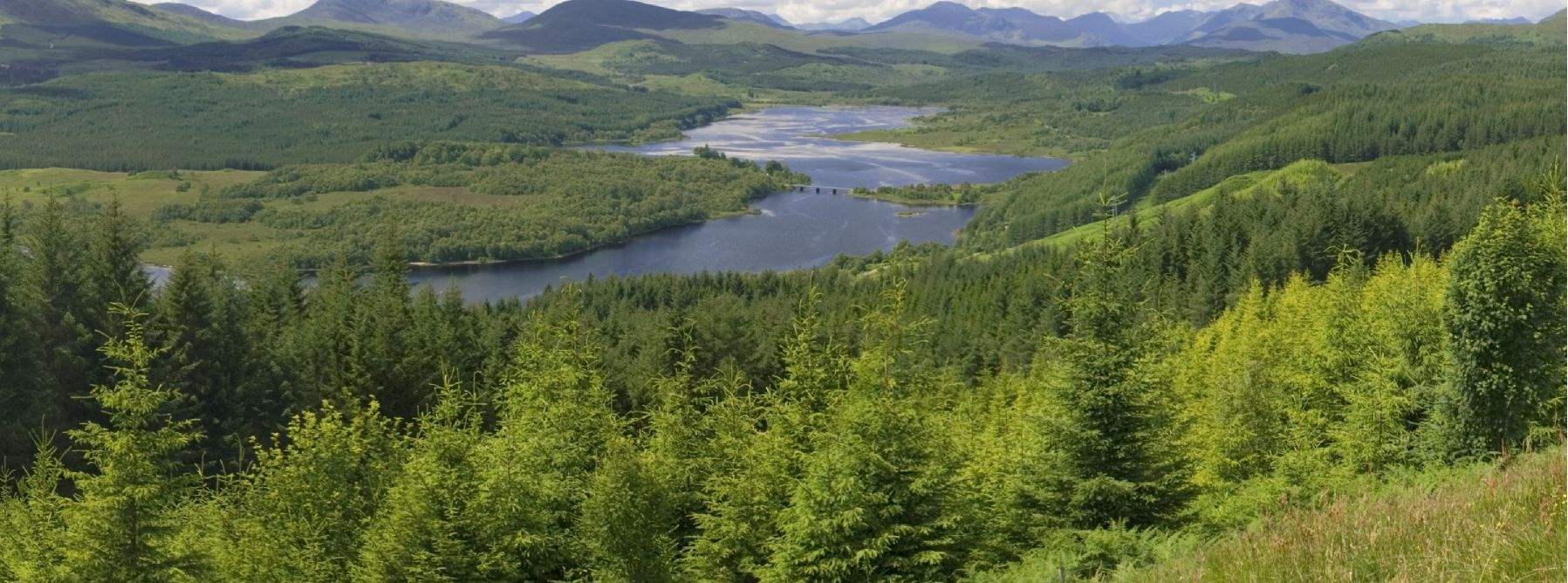Recent years have seen a renaissance in woodland creation in Scotland. The current Scottish Government is determined to encourage new planting, with strong Forestry Grant Scheme (FGS) funding on offer. The annual planting target of 10,000 hectares will be exceeded during 2018/19, with demand in future years set to be even higher, backed up by continuing political support.
But as a landowner how do you start considering land use diversification to forestry? It is useful to appreciate the factors that make the difference between a strong forest design and a non-starter.
LAND USE CAPABILITY/LAND PRICE
- In order to justify a change of land use to productive forestry, a land parcel has to find the middle ground between a suitable tree-growing climate and a sensible land value. In practice this often means planting above the high cost arable/ improved grazing land but below the climatically unsuitable moor.
SOILS
- An early stumbling block in woodland creation is the presence of too much deep peat (>0.5m on average). The planting of these organic soils can release significant carbon and this must be carefully balanced with the positive sequestration of new planting. Therefore prompt analysis of the site via aerial imagery and on site soil surveys are essential.
GROUND FLORA
- An ecological survey is often required to identify areas of habitat value within the land parcel. With this information important habitats can be buffered within the new forest as Designed Open Ground.
WILD BIRDS/EUROPEAN PROTECTED SPECIES
- Screening is carried out for protected species and depending upon the location and land type there may be call for a Breeding Bird Survey. All ecological reports also aim to highlight the positive effects that the new woodland will make for certain species groups in the locality.
ARCHAEOLOGY
- The unimproved nature of many potential planting sites means there are often visible or subterranean historic features that require protection. Therefore an archaeologist may be tasked to survey a land parcel and propose mitigation measure to incorporate features into the forest design.
LOCAL AGRICULTURAL IMPACT
- Despite the fact that farmland still heavily outweighs forestry in Scottish land use, it is important that local land use changes are carefully considered. All potential schemes are required to appraise a land parcel’s agricultural capacity and how planting may impact on local employment.
LANDSCAPE
- The visual landscape impact of the eventual woodland design must be considered to make sure the new forest sits naturally within the wider landscape.
COMMUNITY CONSULTATION AND RECREATION
- Neighbours and statutory consultees are consulted regarding a draft woodland design and feedback is generally incorporated within an FGS application.
FORESTRY AND WOODLAND STRATEGY
- These strategic documents are periodically reviewed by Councils and provide a steer on the existing planning position for a Local Authority area.
ADDITIONAL SITE FACTORS
- The status of local public roads, and the affordability of forest roads needed for connection to the forest, must be appraised. Utilities crossing the proposed site, water catchment areas or private water supplies can all affect the productive area and or design.
The factors above are often easily incorporated into the final design and should not be seen as barriers to entry. On the contrary, with the right strategic advice they are a route map to a high-quality forestry asset.
With a strong global outlook for timber, woodland creation is proving to be an appealing diversification option for landowners. A good appreciation of the factors affecting this option, and how they shape the final design of the forest, may well give the enterprising applicant a fresh perspective on their holding and its future.
Further information

.jpg)
.jpg)
.jpg)
.jpg)

.jpg)


.jpg)
.jpg)